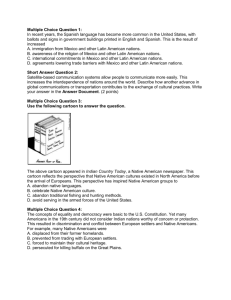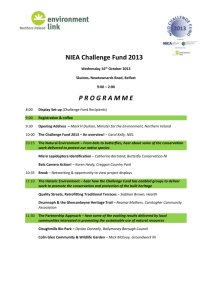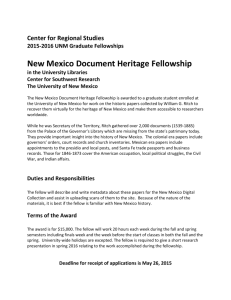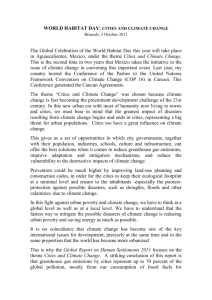bi-national cultural heritage program mexico
advertisement
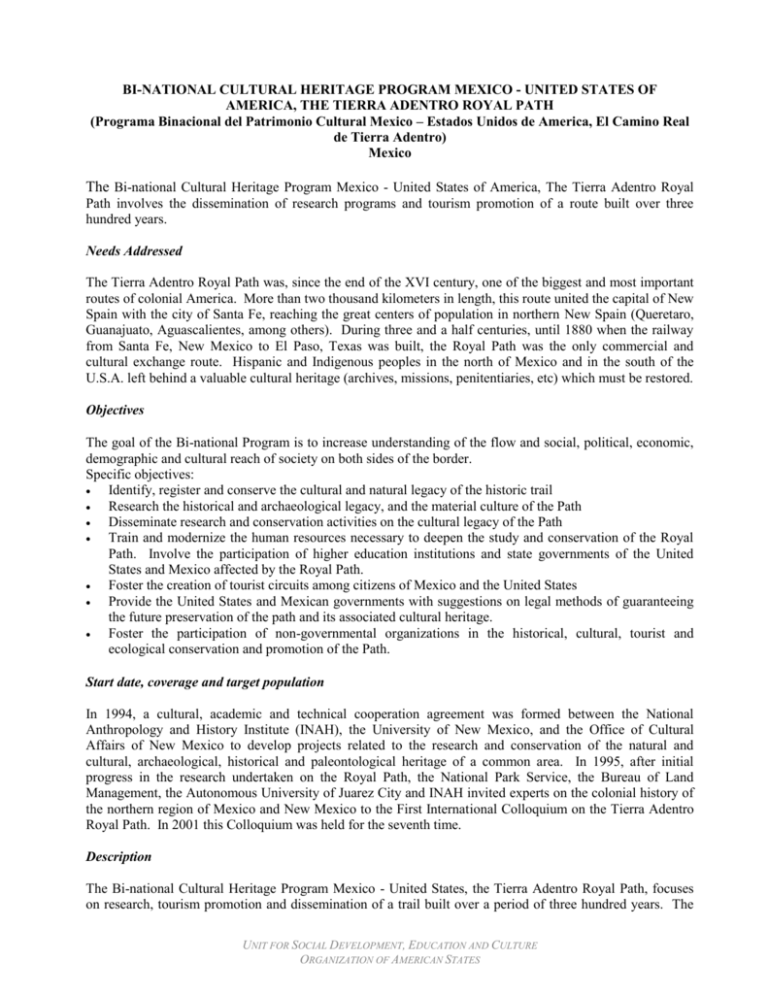
BI-NATIONAL CULTURAL HERITAGE PROGRAM MEXICO - UNITED STATES OF AMERICA, THE TIERRA ADENTRO ROYAL PATH (Programa Binacional del Patrimonio Cultural Mexico – Estados Unidos de America, El Camino Real de Tierra Adentro) Mexico The Bi-national Cultural Heritage Program Mexico - United States of America, The Tierra Adentro Royal Path involves the dissemination of research programs and tourism promotion of a route built over three hundred years. Needs Addressed The Tierra Adentro Royal Path was, since the end of the XVI century, one of the biggest and most important routes of colonial America. More than two thousand kilometers in length, this route united the capital of New Spain with the city of Santa Fe, reaching the great centers of population in northern New Spain (Queretaro, Guanajuato, Aguascalientes, among others). During three and a half centuries, until 1880 when the railway from Santa Fe, New Mexico to El Paso, Texas was built, the Royal Path was the only commercial and cultural exchange route. Hispanic and Indigenous peoples in the north of Mexico and in the south of the U.S.A. left behind a valuable cultural heritage (archives, missions, penitentiaries, etc) which must be restored. Objectives The goal of the Bi-national Program is to increase understanding of the flow and social, political, economic, demographic and cultural reach of society on both sides of the border. Specific objectives: Identify, register and conserve the cultural and natural legacy of the historic trail Research the historical and archaeological legacy, and the material culture of the Path Disseminate research and conservation activities on the cultural legacy of the Path Train and modernize the human resources necessary to deepen the study and conservation of the Royal Path. Involve the participation of higher education institutions and state governments of the United States and Mexico affected by the Royal Path. Foster the creation of tourist circuits among citizens of Mexico and the United States Provide the United States and Mexican governments with suggestions on legal methods of guaranteeing the future preservation of the path and its associated cultural heritage. Foster the participation of non-governmental organizations in the historical, cultural, tourist and ecological conservation and promotion of the Path. Start date, coverage and target population In 1994, a cultural, academic and technical cooperation agreement was formed between the National Anthropology and History Institute (INAH), the University of New Mexico, and the Office of Cultural Affairs of New Mexico to develop projects related to the research and conservation of the natural and cultural, archaeological, historical and paleontological heritage of a common area. In 1995, after initial progress in the research undertaken on the Royal Path, the National Park Service, the Bureau of Land Management, the Autonomous University of Juarez City and INAH invited experts on the colonial history of the northern region of Mexico and New Mexico to the First International Colloquium on the Tierra Adentro Royal Path. In 2001 this Colloquium was held for the seventh time. Description The Bi-national Cultural Heritage Program Mexico - United States, the Tierra Adentro Royal Path, focuses on research, tourism promotion and dissemination of a trail built over a period of three hundred years. The UNIT FOR SOCIAL DEVELOPMENT, EDUCATION AND CULTURE ORGANIZATION OF AMERICAN STATES program deals with a geopolitical border space that touches the Mexican states of Aguascalientes, Chihuahua, Durango, Guanajuato, San Luis Potosi and Zacatecas, as well as the states of Texas and New Mexico in the United States. The program covers the following areas: Conservation: Recovery and preservation of pre-Hispanic settlements, natural regions with art, archaeological and historic monuments as well developing catalogs of these monuments. Dissemination: Publication of research and conservation works. Scientific and student exchange: Academic exchange activities between universities and other higher education centers participating in the program. Human Resources Training: Granting of educational and research scholarships. Cultural Tourism: Establishment of tourist circuits. Legal protection of the Tierra Adentro Royal Path: Proposal of legal means that will guarantee the conservation and enjoyment of the Royal Path's cultural legacy. The organizing body of this program is the Bi-national Committee, which is made up of representatives from participating institutions and is responsible for proposing, revising and authorizing the program's activities. Sources of Finance Resources are provided by the National Anthropology and History Institute (INAH), the Universities of Texas and New Mexico, the Office of Cultural Affairs of New Mexico, the National Park Service and the Land Management Bureau of the United States. Program Strengths The Program was created as a bi-national, inter-institutional and interdisciplinary project to research the ethnic and cultural composition of the populations along a bi-national corridor, in which two world visions interact, with shared historic ties and common cultural links. Achievements The Program addresses the current social and economic perspectives, at the national and international levels, for the formation of specialist and research groups in the conservation and dissemination of cultural heritage. A fundamental element of the program has been the participation of organized civil society in cultural activities and in the conservation of heritage. Challenges Foster links between the Royal Path programs and the urban development projects of state and municipal governments in order to incorporate conservation proposals to the latter. Increase the participation of various specialists, different levels of government and social sectors in a common cause: the conservation of cultural heritage. Foster the active participation of society in the research and planning processes so that they may care for and maintain their cultural heritage. Foster the creation of civic councils, committees and associations. Integrate the technical file of the Tierra Adentro Royal Path to the cultural itinerary recognized by UNESCO. Encourage universities to design curricula that will train specialists in the conservation of the Royal Path's cultural heritage. UNIT FOR SOCIAL DEVELOPMENT, EDUCATION AND CULTURE ORGANIZATION OF AMERICAN STATES



